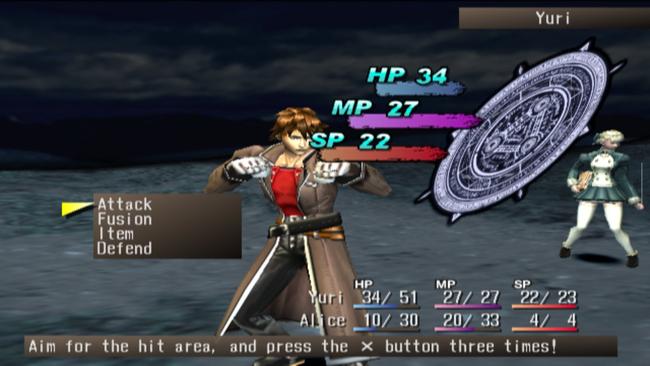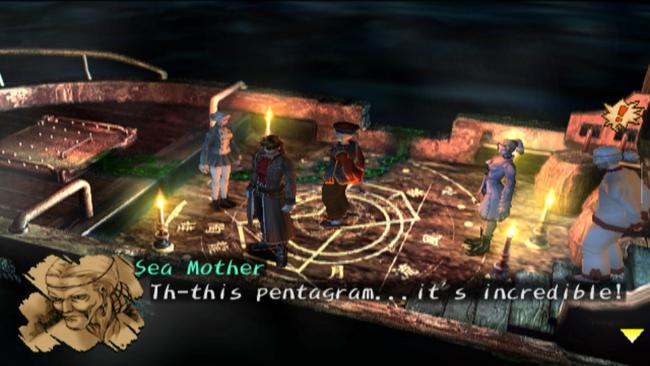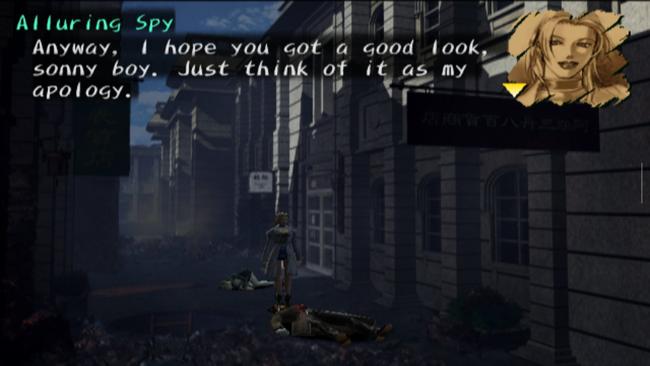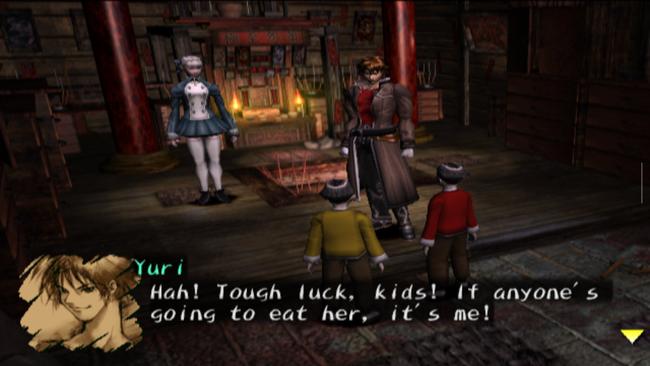
We need more games like Shadow Hearts
Perhaps the scariest thing about Shadow Hearts isn’t something that happens in the game, but rather the circumstances of its western release date. The horror RPG released on December 12, 2001 - just a week before a little game called Final Fantasy X. Although mostly lost in the tide to the genre juggernaut, this cult classic horror title - itself a successor to the PlayStation RPG Koudelka - would do well enough to spawn a sequel or two over the next few years. It’s a frightful and campy turn-based RPG the genre could use more of.
Shadow Hearts takes place in an alternate 1913, just before the start of the First World War, taking players on a journey through parts of China and Europe. It nails the opening, taking place during a trainside massacre after the murder of a priest and kidnapping of his daughter - it’s gristly fun. The game has players assume the role of Yuri, who is a “Harmonixer” - basically half-human, half-demon, and able to fuse into his demon forms at will. He rescues the kidnapped woman, Alice, from an old British man wearing a top hat calling himself Roger Bacon. Thus kicks off a trans-continental chase for Alice as she is followed by Bacon and Denhua, an ailing demigod looking to ascend to a higher plane more than fifteen years after his last attempt ended in failure. If you were the 14-year-old Buffy the Vampire Slayer fan I was in 2001, you were eating this story up.

The game deftly blends Eastern and Western mythology and design elements in terms of location, graphics, and even sound design. I mean this quite literally - in the first hour, our half-Japanese, half-Russian half-demon hero gets trapped in a village because of a magical Taoist seal where cat demons eat anything ensnared. It’s complemented by a dynamic mix of characters: Alice is all but a British priestess, and we are joined by a gorgeous spy, a vampire, and a Taoist exorcist. It sounds absurd, and frankly, it is absurd in the best way possible. The game is keenly aware of just how ridiculous everything is, but it manages to straddle the line without crossing it, even if it happens to wink at the audience through the screen half the time.
This sense of humor is perfectly balanced with the horror trappings. The opening cinematic serves eviscerated guards and even Yuri’s own amputated arm, only for him to gleefully reattach it. This rowdy violence is a perfect juxtaposition to the game’s weirdness - in Shadow Hearts, almost everyone is delightfully weird. They’re also oddly horny: villagers, demons, and even party members make plenty of suggestive comments. It’s all in good, possibly oddly-localized fun, although there is one odd drawback where Yuri jokes about assaulting Alice while she’s unconscious a few times in the first few hours. That blemish aside, the story hits some interesting and tragic beats, with references to Koudelka while also setting up a sequel that adopts one (or both) of the game’s two endings.

While the setting, tone, and even style of Shadow Hearts isn’t necessarily a rarity in gaming, it’s the irresistible and quirky mix of those factors with its combat that is unique. It is a purely turn-based affair with an interesting kink: all actions in combat, and even some out of combat, are hinged upon the judgment ring. After an action is chosen, the ring appears, with a target area highlighted. As the line passes around the ring, players must time their button press so the line is within a target area. It’s part rhythm game and part QTE, with the hit, strike, and other targets on the ring based on the command. It adds a bit of gambling to the proceedings: land it safely within the hit zone and do ordinary damage; time it within the much smaller, red critical area to land a powerful strike at the risk of missing the turn entirely. As players become familiar with the mechanics, new wrinkles are added with status effects that make the rings smaller, wider, slower, or even faster. The mechanic can be frustrating and exciting in the same turn, and requires a level of attention and reflex control during even run-of-the-mill battles.
Each character has a unique weapon and set of skills - light magic, spy attacks, and demon fusion, to name a few - that add variety and help balance out a growing party. The result is standard, yet engaging combat all supported by well-designed attack animations. One of my personal favorite abilities early on is Margarete's smart bomb attack, where she pulls out a large cell phone and calls for backup - in an English voice - before shouting in Japanese when tossing the bomb. In other games, this would seem like a glitch, whereas in Shadow Hearts it feels…oddly intentional.

The graphics and sound design also maintain this zany energy. The enemies are well drawn, taking notes from Eastern and Western influences while also throwing in a touch of HP Lovecraft, especially with the ghastly boss designs. Yuri and company start fighting demon cats and spiders but end up fighting devilish gods and Biblically accurate angels. There’s a sense of excitement with each new boss fight, imagining what hellish fun these artists had designing these creatures. The backgrounds are pre-rendered in that now-classic style, and the range of Asian and European locales are vivid and still look great. The soundtrack has a lot of great, fusiony tracks - a personal favorite plays during a sequence on a boat - but the battle theme badly needs an updated arrangement.
The tight turn-based combat combined with the unique setting and spirited characters make for a frothy, scary good time that never takes itself too seriously. We could absolutely use more RPGs like this. There are plenty of horror/action games, both when Shadow Hearts was originally released and now, but there was (and still is) a dearth of horror RPGs that elicit scares and laughs in the same scene. Combining turn-based or other RPG elements into a horror narrative, however campy, is a great way for players who want a horror experience without necessarily having to survive one due to skill, access barriers, or even just personal preference. It’s a perfect marriage of sensibilities and certainly less stressful than, say, Resident Evil 4 Remake.

There are other horror games with RPG elements, yes, but not as many as there should be. This is one reason why the recently Kickstarted Penny Blood is so interesting. Boasting the same key creators as Shadow Hearts, its marketing claims to feature similar concepts to Koudelka and Shadow Hearts. The game quickly reached its initial fundraising goals and is anticipating a 2025 launch. A roguelike prequel prologue for Penny Blood is arriving sooner than that, luckily.
The excitement around Penny Blood underscores the appetite for games like this. Some gamers want those horror vibes but don’t want to have to play through an action game. Shadow Hearts dishes out grisly mayhem and occult occurrences, but with plenty doses of bawdy humor and swagger. It can be downright scary - but it’s the game’s sense of humor, style, and individuality that’s truly killer.